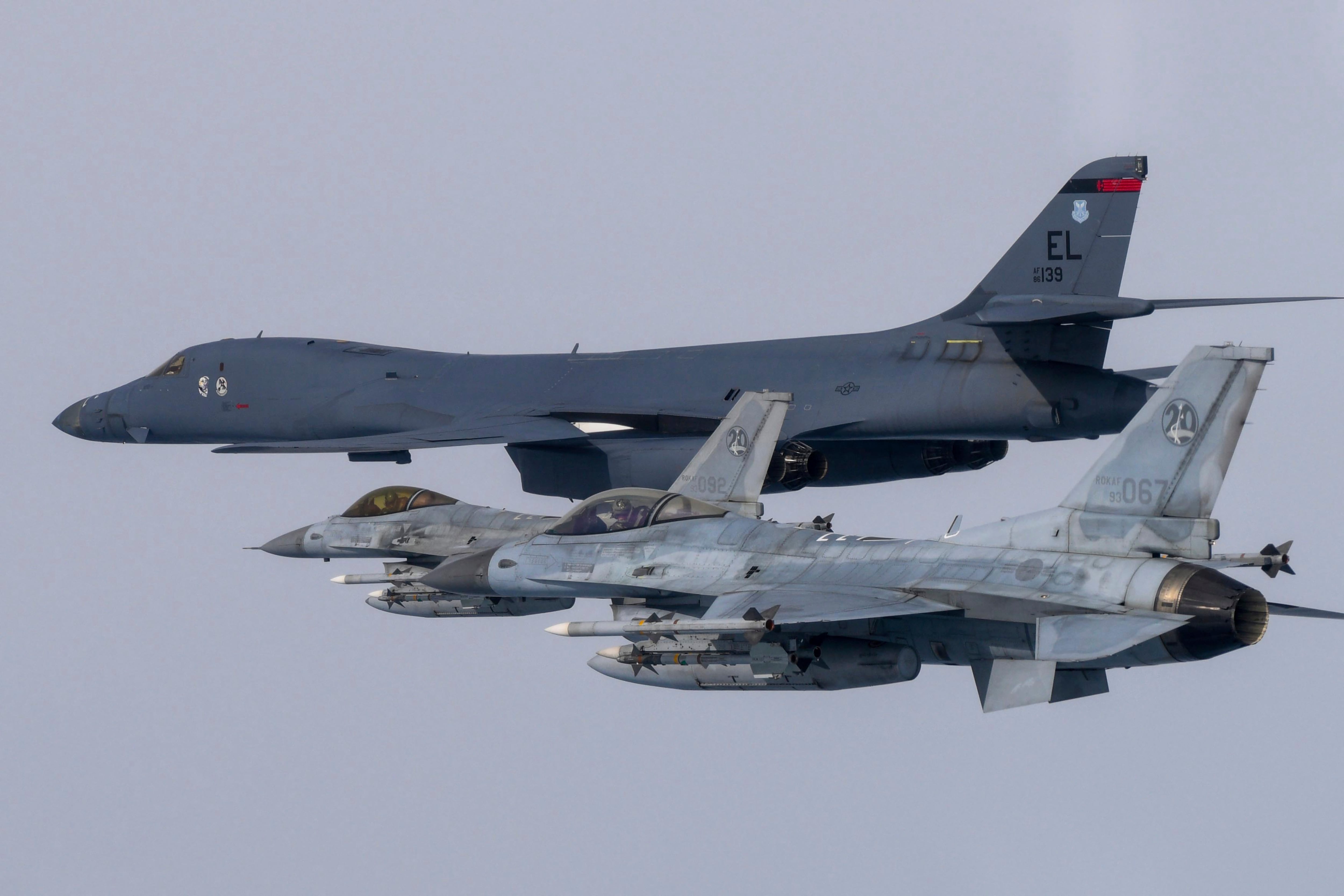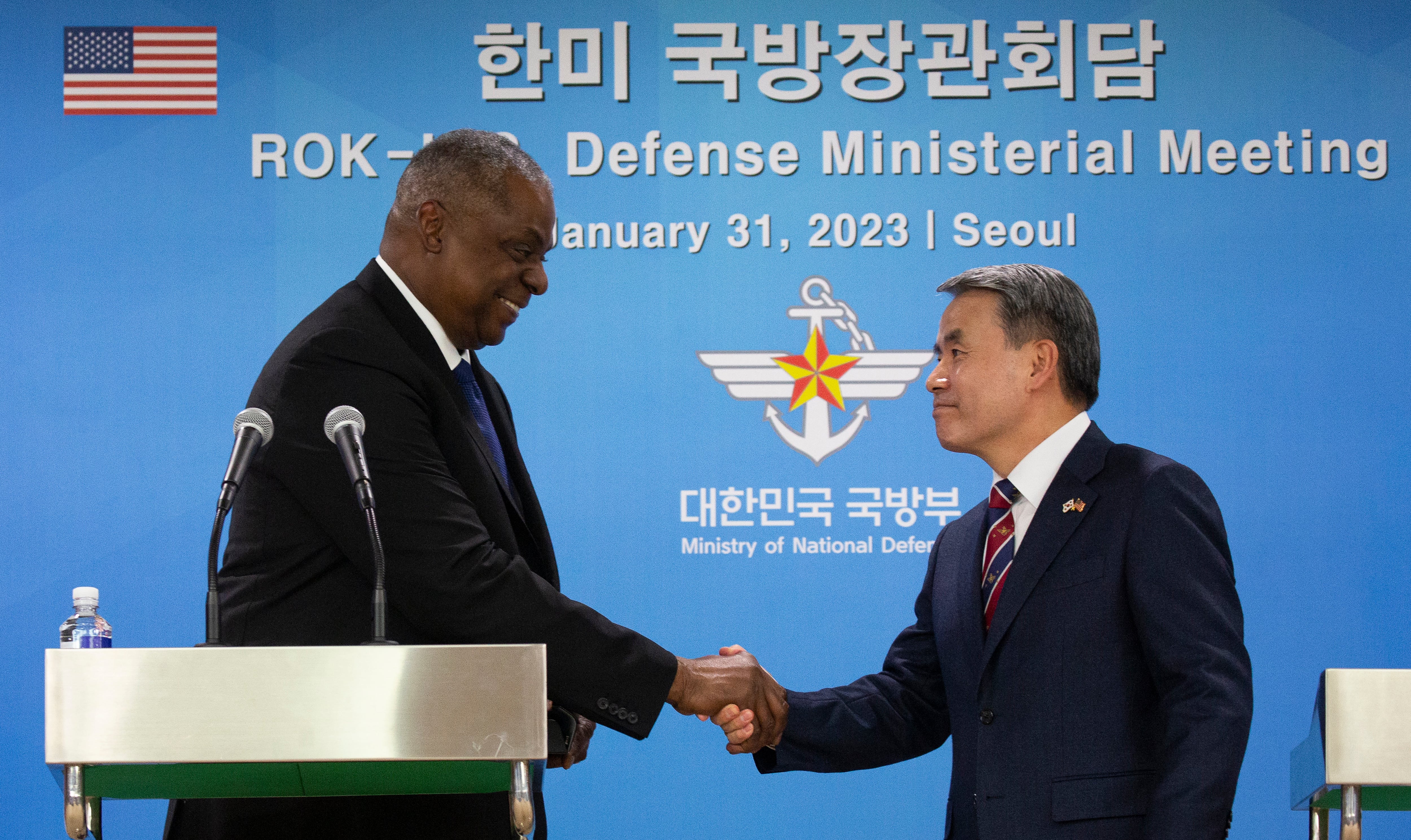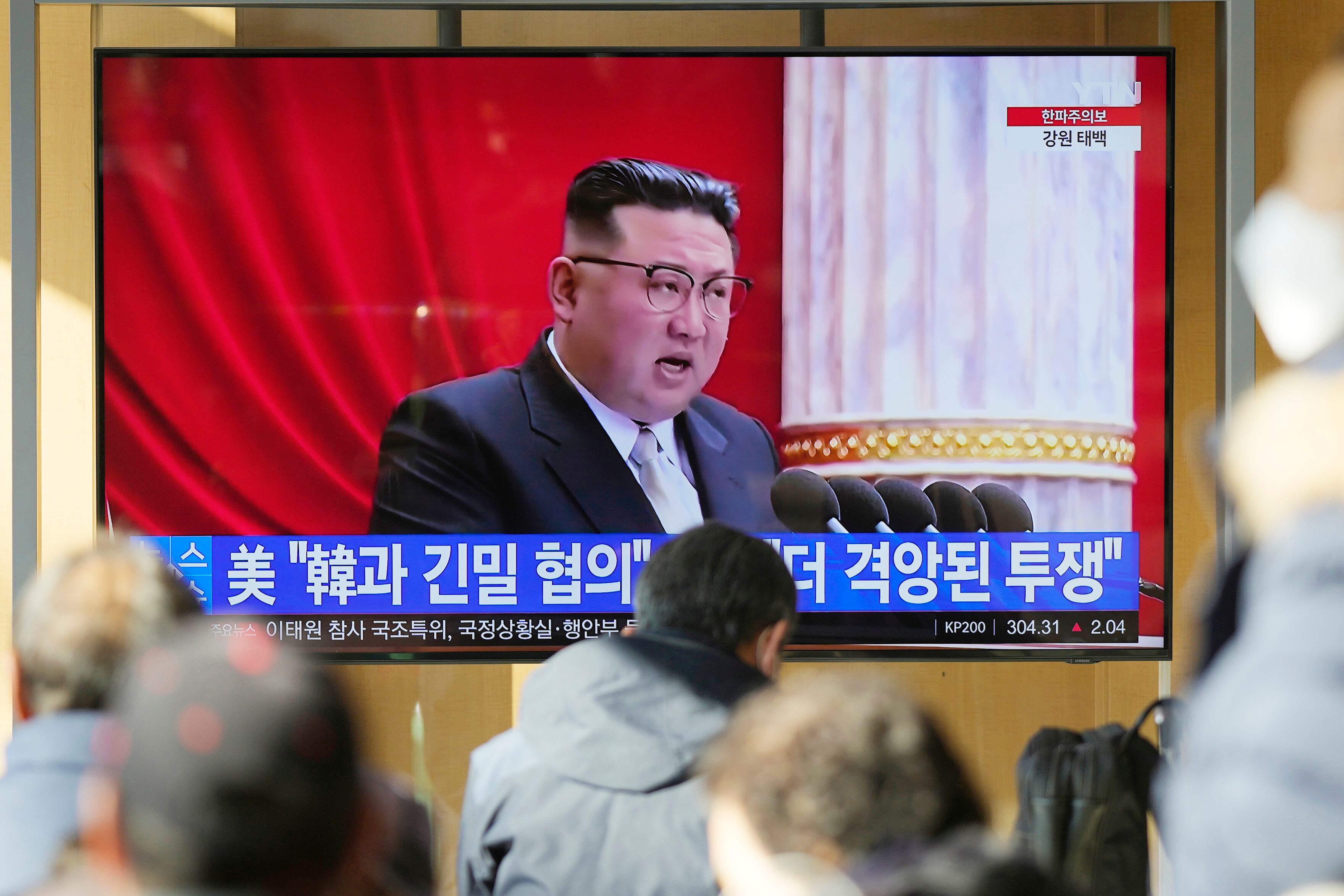SEOUL, South Korea — North Korea on Thursday fired a short-range ballistic missile toward waters off its western coast, South Korea’s military said.
The launch came as the United States and South Korea prepare to hold their biggest combined military training exercises in years next week to counter the threat of North Korea’s nuclear arsenal, which leader Kim Jong Un has aggressively expanded in recent years despite his country’s deepening economic isolation and pandemic-related difficulties.
RELATED

The South’s Joint Chiefs of Staff said the missile was fired at around 6:20 p.m. from an area near the western coastal city of Nampo. There were no immediate assessments of how far it flew or where it landed.
The Joint Chiefs of Staff said later Thursday it was examining the possibility that North Korea may have launched several ballistic missiles from the area, not just one.
The South Korean military strengthened its surveillance of North Korean activities while maintaining “full readiness” in close coordination with its ally, the U.S., the Joint Chiefs of Staff said. The U.S. Indo-Pacific Command said the launch did not pose an “immediate threat to U.S. personnel or territory, or to our allies” but still highlighted the destabilizing impact of North Korea’s nuclear weapons and missile program.
The launch came after Kim’s powerful sister warned Tuesday that her country is ready to take “quick, overwhelming action” against the United States and South Korea as the allies expand their military training to cope with a growing North Korean nuclear threat.
Coming off a record year in missile testing, North Korea has conducted more weapons demonstrations to 2023 including test launches of an intercontinental ballistic missile, short-range missiles and a purported long-range cruise missile system in recent weeks.
Experts say North Korea with its escalated testing activity and threats is trying to claim an ability to conduct nuclear strikes in South Korea and the U.S. mainland. Kim, who sees his nuclear arsenal as his strongest guarantee of survival, is trying to force the United States into accepting the North as a nuclear power and wants to negotiate badly needed economic concessions from a position of strength, analysts say.
Diplomacy between the U.S. and North Korea has stalled since 2019 because of disagreements over an easing of crippling U.S.-led sanctions against the North in exchange for steps by the North to wind down its nuclear weapons and missile programs.
Last week, the South Korean and U.S. militaries announced they will conduct computer-simulated command post training on March 13-23 and will resume their largest springtime field exercises, which were last held in 2018.
The United States has also recently sent advanced warplanes, including the B-1B and B-52 long-range bombers, to train with South Korean aircraft in a show of strength, triggering protests from North Korea, which describes the allies’ joint drills as invasion rehearsals.
RELATED

The allies had canceled or scaled back some of their regular drills since 2018 to support now-dormant diplomacy with North Korea and guard against the COVID-19 pandemic. But they have been restoring their exercises after North Korea test-fired dozens of missiles last year and threatened to use its nuclear weapons in potential conflicts with its rivals.
North Korea’s growing nuclear arsenal and provocations have raised the urgency for South Korea and Japan to strengthen their defense postures in conjunction with their alliances with the United States.
While expanding joint drills with the U.S., South Korean President Yoon Suk Yeol’s government is also seeking stronger assurances that the United States will swiftly and decisively use its nuclear capabilities to protect Seoul in the event of a North Korean nuclear attack.
Under Prime Minister Fumio Kishida, Japan has made a major break from its self-defense-only post-World War II principle, adopting a new national security strategy in December that includes the goals of acquiring preemptive strike capabilities and cruise missiles to counter growing threats from North Korea, China and Russia.
Their shared urgency over security is also pushing South Korea and Japan closer together following years of disputes stemming from Japan’s colonial rule of the Korean Peninsula before the end of World War II.
Earlier Thursday, the South Korean and Japanese governments said Yoon will travel to Tokyo to meet with Kishida next week. The summit plan was announced days after the Yoon government announced a domestically contentious plan to use local funds to compensate Koreans enslaved by Japanese companies before the end of World War II. The plan was praised by U.S. President Joe Biden as a major step toward resolving the strained relationship between Seoul and Tokyo.
Washington has been pressing South Korea and Japan to repair their relations as it seeks stronger trilateral security cooperation to cope with the growing regional challenges. Yoon is also planning to travel to Washington next week for a meeting with Biden.
“This is likely only the beginning of a series of provocative tests by North Korea,” said Leif-Eric Easley, a professor at Ewha University in Seoul.
North Korea “is poised to respond aggressively to major U.S.-South Korea defense exercises, as well as to President Yoon’s upcoming summits with Prime Minister Kishida and President Biden. The Kim regime may order missile firings of longer ranges, attempt a spy satellite launch, demonstrate a solid-fuel engine and perhaps even conduct a nuclear test.”
In her statement on Tuesday, Kim Yo Jong, Kim Jong Un’s sister and one of his top foreign policy officials, said North Korea is keeping a close eye on “the U.S. forces and the South Korean puppet military” and is prepared to take “appropriate, quick and overwhelming action at any time according to our judgment.”
In previous statements, Kim Yo Jong threatened to turn the Pacific into North Korea’s firing range and repeatedly implied that the North might test-fire an ICBM toward those waters on a ballistic trajectory, which would be seen as one of its most provocative weapons demonstrations yet.
All of North Korea’s ICBM tests since 2017 have been conducted on a high angle to avoid the territories of neighbors.





